Exploring Carver Skateboards: Design and Culture
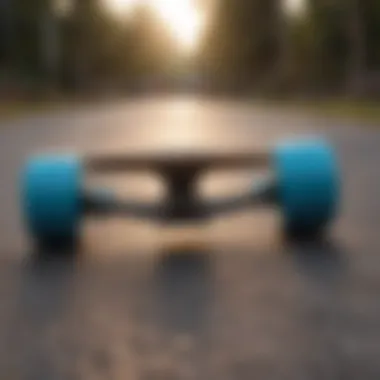
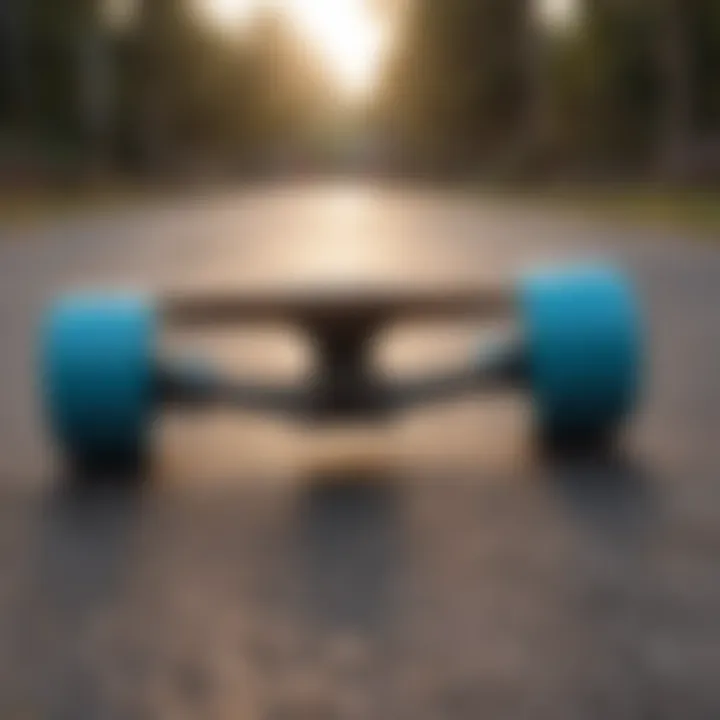
Intro
Carver skateboards have emerged as a distinctive phenomenon in the world of extreme sports. They are not just boards; they represent an evolution in design and functionality that caters to both enthusiasts and newcomers alike. This article will delve into the various dynamics surrounding carver skateboards, including their mechanics, design aspects, and cultural significance.
Understanding carver skateboards requires a look into their unique elements. Their design emphasizes carving, simulating surfing or snowboarding on pavement. This unique riding style appeals to thrill-seekers, who often seek a more engaging experience than traditional skateboarding offers.
Additionally, the impact of carver skateboards on skating culture cannot be understated. They have fostered a new wave of interest in skateboarding, bridging gaps between different sports and attracting diverse user experiences. We will also explore how these boards aid in skill development, helping riders refine their techniques while enjoying the ride.
In the sections that follow, we’ll examine practical techniques and insights for skill development, necessary gear, safety measures, and spotlight notable figures in the world of extreme sports, particularly as they relate to carver skateboards. This guide aims to present a comprehensive perspective for all who are eager to explore this fascinating aspect of modern skating.
Prelude to Carver Skateboards
Carver skateboards represent a significant shift in the landscape of skateboarding, merging traditional skateboarding with surfing dynamics. The core importance of understanding Carver skateboards lies in their distinct design and functionality, which cater to the needs of many thrill-seekers, extreme sports enthusiasts, and adventure lovers.
These skateboards feature a unique truck system that allows riders to achieve a carving motion reminiscent of surfing or snowboarding. This offers a different kind of experience that allows for more fluid, fluid movements. Unlike traditional skateboards, which often rely more heavily on tricks and jumps, Carver boards focus on style and flow.
Exploring the facets of Carver skateboards reveals numerous benefits. First, riders can practice carving techniques that enhance balance and coordination. These skills transition smoothly into other adrenaline sports, making Carver boards a great choice for serious athletes.
Moreover, the riding experience provided by Carver boards emphasizes fun and creativity over competition. This generates a sense of community among users who appreciate the artistic and expressive aspects of carving. It also attracts a wider range of participants to the skateboarding scene, breaking barriers that conventional skateboarding might enforce.
Additionally, the popularity of Carver skateboards has prompted discussions within the sporting community about inclusivity and the future of extreme sports. Participating and experimenting with such boards can lead to growth, both individually and collectively within the skateboarding culture. Ultimately, understanding Carver skateboards is essential for anyone looking to delve into the dynamic world of carving and its role within skateboarding as a whole.
Historical Context of Skateboarding
Understanding the historical context of skateboarding is essential for grasping the evolution of the sport and the specific innovations that have emerged. Skateboarding is not just a leisure activity; it has transformed into a cultural phenomenon that intertwines with the ideas of freedom, creativity, and community. By examining its origins and development, we can appreciate how products like Carver skateboards fit into this broader narrative.
Origins of the Skateboard Revolution
The skateboard revolution began in the late 1940s when surfers in California sought a way to practice their maneuvers on land. Encouraged by surf culture, early skateboards were often made from wooden boxes or planks with roller skate wheels attached. These primitive models were simple and sometimes fragile, but they laid the groundwork for what skateboarding would become.
Adaptations started appearing, including the introduction of wider wheels and better materials. The 1960s saw a surge in popularity, with iconic brands such as Makaha and Hobie leading the way. This period marked the first real skateboard craze, promoting skateboarding as a distinct sport rather than just a practice tool for surfers.
The Evolution of Skateboard Design
As skateboarding gained traction, design underwent significant transformation. The introduction of materials like fiberglass and urethane wheels revolutionized performance. This evolution allowed for improved speed, grip, and shock absorption, enhancing the overall riding experience.
Board shapes varied, from the narrower, more technical setups favored by street skaters to the wider, more stable boards suited for downhill racing. The 1980s brought about the modern skateboard we recognize today, characterized by the "nose" and "tail" shapes that allow for tricks and stunts. This era led to the birth of freestyle skateboarding and the emergence of legendary athletes who pushed boundaries.
Emergence of Carver Skateboards
Carver skateboards emerged in the 1990s, inspired by the desire for a skateboarding experience that closely mimics surfing. The emphasis was placed on creating a board that enables riders to carve efficiently. Unique truck designs, specifically designed for pivoting, allowed the rider’s movements to closely replicate those on a surfboard. This was a significant shift from traditional skateboards, emphasizing flow and dynamic movement rather than just tricks.
Dedicated to enhancing riding experience, Carver Skateboards have captured the attention of thrill-seekers. These boards not only serve the purpose of transportation but also promote a style of riding that blends surf culture with skateboarding. The result is an engaging experience that resonates with users, offering both challenge and exhilaration.
"Carver skateboards do not just offer a mode of transport; they redefine the carving experience, embodying elements from surfing straight to the pavement."
As skateboarding continues to evolve, understanding this historical context highlights the significance of Carver skateboards in promoting a seamless connection between different physical activities. The journey from basic wooden planks to the tailored, advanced designs we see today is a testament to creativity within the sport.
Understanding Carver Skateboard Mechanics
Understanding the mechanics of Carver skateboards is essential for grasping their unique appeal. The interplay of design elements directly influences not only the riding experience but also how riders develop their skills. Insight into these mechanics reveals the technical sophistication and functional benefits that set Carver boards apart in the competitive world of skateboarding.
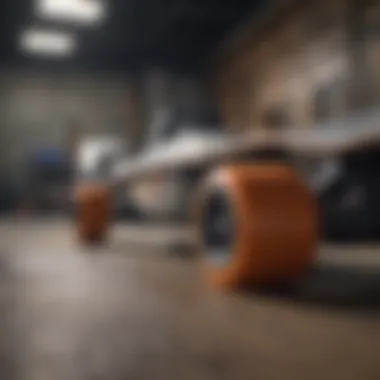
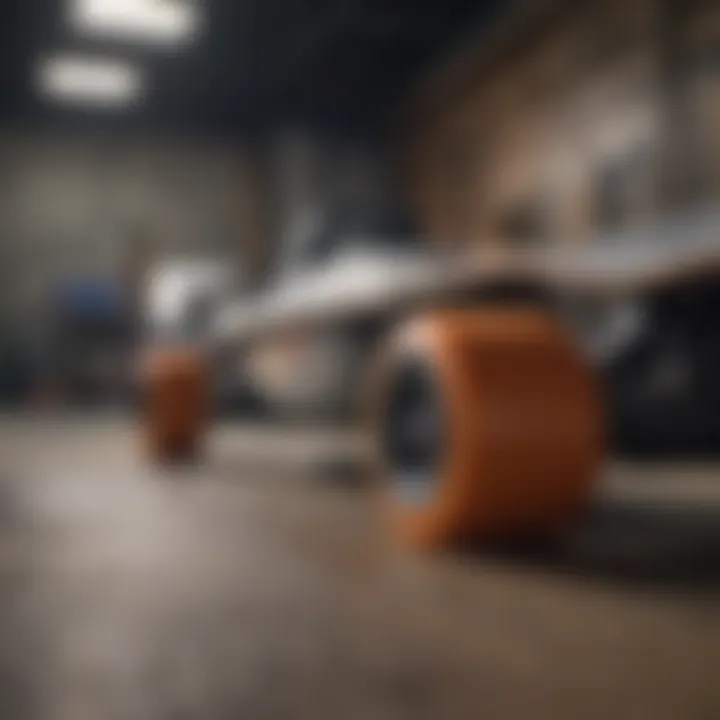
Unique Design Elements
Board Shape and Size
The shape and size of a Carver board significantly affect its performance and comfort. Typically, Carver boards feature wider decks. The wider platform allows better foot placement and stability, especially during carving. This characteristic makes it a favorable choice for riders who enjoy smooth turns and flowing movements.
The distinctive slight curvature of the board's shape enhances its responsiveness, allowing for quick adjustments while riding. However, some might find that a wider board sacrifices maneuverability. This aspect is crucial for riders who prefer freestyle tricks or tighter spaces.
Wheel Configuration
The wheel configuration on Carver boards is another critical element. Carver wheels are generally softer and larger than traditional skateboard wheels. This choice reduces vibrations and adds comfort, making it easier for riders to tackle rough terrains or uneven surfaces.
A notable feature is the wheel's durometer, which dictates hardness. Softer wheels provide more grip and smoother rides but can wear down faster. Conversely, harder wheels last longer but may provide a less cushioned experience. Understanding these nuances aids riders in selecting an ideal setup that matches their riding style.
Truck Mechanics
Truck mechanics on Carver boards are engineered to elevate the carving experience. Carver uses a patented system that allows for more fluid movements compared to standard skateboard trucks. These trucks have a unique pivot mechanism that promotes deeper turns and dynamic carving.
This design includes specific features like adjustable baseplates, allowing riders to fine-tune their setups according to preferences. While it is beneficial for carving, this complexity might intimidate beginners unfamiliar with skateboard mechanics. However, once mastered, it significantly enhances overall performance.
How Carver Boards Differ from Traditional Skateboards
In many aspects, Carver boards stand apart from traditional skateboards. Traditional boards often emphasize tricks and street skating, relying less on carving dynamics. The structural design of Carver skateboards is deliberately focused on carving and the fluid motion of riding.
The main difference is the approach to turning and speed control. Carver boards facilitate longer, smoother turns, encouraging riders to lean and shift their weight for a more natural feel. In contrast, traditional skateboards require more abrupt adjustments and may not provide the same ease of cruising.
The overall experience on Carver boards can be more forgiving. Riders often find that they can transition smoothly between different terrains, which is generally more challenging on traditional setups. This capability gives Carver boards an edge for those engaged in casual riding as well as more serious carving.
The Riding Experience on Carver Boards
The riding experience on Carver boards stands as a pivotal aspect in comprehending their uniqueness. Unlike other skateboards, Carver boards provide a distinctive sensation that combines the elements of surfing and conventional skating. The design of these boards allows riders to turn smoothly and carve effectively, creating a more dynamic movement pattern. This is not merely about transport; it is a form of expression and a way to enhance an individual’s connection with the terrain.
Techniques for Effective Riding
Carving Techniques
Carving techniques are fundamental for maximizing the capabilities of a Carver board. The principal focus is on the act of turning with rhythm and fluidity. This establishes control and allows the rider to generate speed through shifts in weight rather than pushing with the foot. A key characteristic of carving on Carver boards is the ability to transition from one turn to another seamlessly. This creates a continuous flow that resembles the movements of surfing on waves.
The unique feature of carving is its ability to engage various muscle groups. This full-body workout increases core strength and stability. However, riders must remain aware of their body posture, as improper positioning can lead to discomfort or loss of control. Hence, mastering carving techniques is essential for an optimal riding experience.
Turning Precision
Turning precision is another defining aspect of riding a Carver board. The mechanics of the board allow for sharp turns without excessive energy loss. Riders can navigate complex environments and avoid obstacles with finesse. The key characteristic here is the board's responsive action during turns, allowing for quick adjustments in direction.
This ability to maneuver effectively in tight spaces enhances the overall experience for riders. However, it also requires practice to harness properly. Novice skaters may initially struggle with the sensitivity of the carve, resulting in wobbly movements. With time, the payoff comes in the form of enhanced control and a satisfying ride.
Balance and Control
Balance and control play an indispensable role in the riding experience on Carver boards. Riders must learn to maintain an even distribution of weight. A key characteristic of balance in this context is the engagement of the lower body and core. Proper balance not only ensures a stable ride but also enhances the rider's ability to perform advanced techniques.
The unique feature here lies in how balance improves confidence over time. As riders become more comfortable on their Carver boards, they can experiment with tricks and different styles. However, a momentary lapse in balance can lead to falls or injuries, which is a consideration that all riders must keep in mind. The practice of balance is ongoing and essential for enjoyment in this sport.
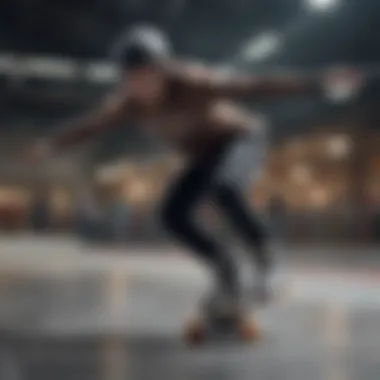
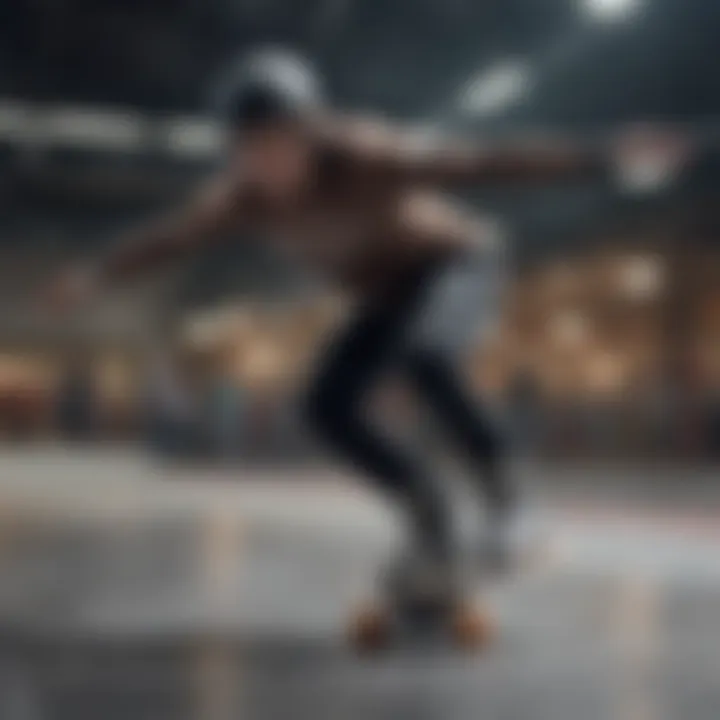
Skill Advancement through Carving
Skill advancement through the practice of carving is another significant benefit of using Carver boards. The nature of carving encourages riders to refine their techniques continually. This progression is not only about learning new skills but also about increasing one’s comfort level with different riding conditions.
Carver boards facilitate an engaging progression path, making it possible for riders to improve quickly yet safely. As they hone their skills, they also discover various ways to express their style on the board. Overall, the riding experience encapsulated by these boards is as much about physical skills as it is about personal exploration and growth.
Safety Considerations in Carving
Carving on a skateboard, particularly with a Carver board, involves a unique set of movements and experiences that can enhance the thrill of the ride. However, safety remains a critical aspect that every skater must recognize and address. Engaging in this sport necessitates proper forethought about protective measures that will help minimize risks associated with riding. Learning how to ride safely can ultimately enhance one's enjoyment and prolong the ability to participate in this exhilarating activity.
Protective Gear Essentials
To defend against potential injuries while carving, wearing suitable protective gear is non-negotiable. The most common items skaters should consider include:
- Helmet: A good quality helmet is the first line of defense against head injuries. It must fit correctly and meet safety standards. A well-fitted helmet can significantly reduce the risk of severe head trauma.
- Wrist Guards: These are fundamental for safeguarding the wrists from fractures or sprains, especially during falls. They provide support and stability, crucial for those who are still perfecting their balance on the board.
- Knee and Elbow Pads: Protecting the joints is another necessary measure. Knee and elbow pads can help mitigate scrapes and bruises when a rider loses balance and falls. They also add some cushioning, which can be beneficial in protecting against hard landings.
- Proper Footwear: Shoes designed for skateboarding can provide appropriate grip and protection. They are often flat and made from durable materials that help prevent slipping off the board.
In short, the right protective gear should be tailored based on individual comfort and riding style. Investing in high-quality gear is essential, as it may make a difference in the event of an accident.
Injury Prevention Strategies
While wearing protective gear is crucial, having a proactive approach towards preventing injuries is also important. Skaters should keep several key strategies in mind:
- Understand Your Skill Level: Skaters should not attempt tricks or maneuvers that exceed their abilities. Progressing at a realistic pace helps build confidence and control.
- Choose Appropriate Locations: Selecting safe environments for carving will greatly impact safety. Beginners should start on flat, smooth surfaces that are free from obstacles. As skills improve, skaters can venture into more challenging terrains.
- Practice Falling: Learning how to fall properly can reduce the risk of serious injuries. Riders should practice techniques like rolling upon impact or protecting their heads and vital body parts during a fall.
- Stay Alert: Being conscious of surroundings can prevent collisions and mishaps. Riders should always be aware of other pedestrians, vehicles, and obstacles on and off the course.
- Maintain Equipment: Regular checks on the skateboard, including wheels, trucks, and deck, can help ensure a safer ride. Ensuring that everything is in good condition can prevent accidents caused by equipment failures.
Safety should never be seen as an afterthought but a continuous process of learning and adapting.
In summary, the combination of appropriate gear and mindful practices forms the backbone of injury prevention in carving. For thrill-seekers and extreme sports enthusiasts, taking proactive measures to ensure safety can allow for a more enjoyable and extended experience in the world of Carver skateboarding.
Cultural Impact of Carver Skateboarding
Carver skateboards have transcended mere recreational activity to become a vital part of contemporary skateboarding culture. Their unique design and functionality have influenced not just how enthusiasts ride, but also how they connect with one another and with the broader sports community.
Carver Boards in Popular Media
The portrayal of carver skateboards in popular media has played a significant role in shaping their cultural significance. Films, television shows, and social media often illustrate the thrill and excitement of carving, making it more desirable among young audiences. Carver boards have featured in various action movies and documentaries, showcasing not only the skills of the riders but also the board's innovative engineering. This visibility fosters a sense of community among riders.
Moreover, platforms like Instagram and YouTube have given rise to a generation of content creators who share their carving experiences. Videos often highlight stunning landscapes as the backdrop for impressive maneuvers. The use of carver boards by prominent athletes and social media influencers can amplify their appeal, inspiring many to take up the sport. Popular accounts showcase techniques and innovations, further embedding carver skateboarding into the lifestyle of thrill-seekers.
"The unique carving motion creates a blend of surf and skate culture, making it a distinct experience for riders."
Community and Events Surrounding Carver Sports
The community around carver skateboarding is vibrant and diverse, often organizing events that promote skills and camaraderie. Weekends see local meetups where skaters of all levels come together to practice and share tips. These events are essential for fostering a sense of belonging. Workshops are often aimed at beginners to enhance their skills and confidence. They teach basic to advanced techniques enjoyed by many riders.
Competitions also play a crucial role. Many local skate parks now host carving contests where riders can showcase their talents. These events are not just about winning; they strengthen the network among enthusiasts and encourage healthy competition.
Carver-specific events can be found on social media platforms, drawing in an array of participants. Many riders are motivated by the chance to meet others sharing their passion for carving. Such gatherings enhance the cultural fabric of skateboarding and create lasting friendships, making carver skateboarding more than just a sport.
Comparative Analysis of Other Skateboard Types
Understanding the distinctions between various types of skateboards is crucial for grasping the relevance of Carver skateboards within the broader skating community. Each skateboard type caters to different riding styles, purposes, and user preferences. A comparative analysis not only highlights the unique features of Carver skateboards but also provides insights into their functional advantages and limitations when juxtaposed with other popular skateboard styles. By dissecting these differences, we gain deeper knowledge that empowers skaters to make informed choices based on their specific needs and riding ambitions.


Longboards vs. Carvers
Longboards and Carver skateboards share a design philosophy that emphasizes smooth rides and enhanced stability. However, their underlying mechanics and intended use diverge significantly. Longboards are typically longer and wider than traditional skateboards and are designed for cruising, downhill carving, and transportation. Their bigger wheels and softer bushings allow for a comfortable experience over long distances and uneven terrain.
Carvers, on the other hand, integrate a unique truck system that mimics the feeling of surfing while carving. The narrower width and shorter length of a Carver board facilitate swift, agile movements, allowing riders to perform tight turns and intricate maneuvers. This makes Carvers better suited for park use and technical tricks compared to the more laid-back nature of longboards.
In summary, when choosing between these two types, consider:
- Purpose: Longboards are ideal for commuting and cruising, while Carvers excel in precision and trick-oriented riding.
- Flexibility and Maneuverability: Carvers allow sharper turns and greater agility, enhancing the carving experience.
- Performance in Various Conditions: Longboards handle rough terrains better, but Carver boards shine in executing quick tricks.
Street Skating vs. Carving
Street skating focuses on performing tricks in urban environments, utilizing ledges, stairs, and rails found in cityscapes. It emphasizes technical skills and creativity in navigating obstacles. Carving through streets offers a different experience, as it emphasizes smooth movements and flowing lines rather than trick-centric challenges.
Carvers bridge the gap between street skating and carving. Riders can benefit from the Carver's unique truck setup, providing the ability to pivot and turn sharply. This adds a layer of versatility missing in standard street skateboards. While street skaters may prioritize flipping tricks or grinds, Carver riders would rather focus on fluid motion and carving out paths through their environment.
When comparing street skating and carving, it’s essential to evaluate:
- Focus on Tricks vs. Fluidity: Street skating leans towards tricks, while carving promotes a connected ride.
- Riding Environment: Street skating depends on urban elements, while carving takes advantage of open spaces.
- Skill Development: Carving can improve overall balance and control, beneficial for street skating trick execution.
In essence, understanding these differences allows riders to choose the most suitable skateboard that aligns with their ambitions, whether it's the ease of carving or the challenge of street tricks.
This comparative analysis serves as a foundation to appreciate the versatility of Carver skateboards, gearing us for exploring future trends and innovations in the field.
Future Trends in Carver Skateboarding
The evolution of carver skateboards is not static. The future promises significant advancements that can reshape the industry and enhance the riding experience. By understanding upcoming trends, we can appreciate how innovation will influence design, performance, and environmental sustainability. This section explores two core aspects: technological innovations and sustainable materials.
Technological Innovations
Advancements in technology are paramount for any sporting equipment, and carver skateboards are no exception. The integration of new materials and smart technology will likely redefine performance metrics. Key innovations include:
- Enhanced Wheel Materials: The shift to lighter and more resilient materials may improve ride quality, increasing efficiency in carving and turning.
- Electric Assistance: Although traditional riding styles focus on the physical prowess, some manufacturers are exploring electric assistance in carving skateboards. This could attract a broader audience without compromising the core experience.
- Smart Technology Integration: Integration with apps for tracking performance, distance, and riding techniques will likely enhance user experience. Users might connect their boards to mobile applications that offer personalized feedback.
"Innovation in skateboarding technology often leads to enhanced rider experience and safety."
Such innovations cater to both thrill-seekers and casual riders, emphasizing performance while ensuring greater safety.
Sustainable Materials in Skateboard Manufacturing
As more consumers prioritize environmental considerations, the shift towards sustainable materials in skateboard manufacturing will gain momentum. This aspect is crucial, as it reflects an industry adapting to global challenges. Important considerations include:
- Biodegradable Components: Manufacturers are exploring composites that break down safely over time, reducing landfill contributions.
- Recycled Materials: Using recycled plastic and metals not only lessens waste but also decreases the carbon footprint of skateboard production.
- Renewable Resources: Sourcing wood from sustainably managed forests will help preserve ecosystems while providing material for skateboard manufacturing. This change promotes eco-friendly practices in production.
With these sustainable practices, the future of carver skateboards aligns well with ecological responsibility. It marks a significant shift not just in supply chains, but also in consumer mindset toward the products they choose to support.
As the market trends evolve, carver skateboards are poised to offer thrilling, yet environmentally conscious experiences for new and seasoned riders alike.
Finale: The Enduring Appeal of Carver Skateboards
The realm of carver skateboards is not just about the boards themselves but about the culture and lifestyle they represent. Carver skateboards have carved out a distinct niche within the broader skateboarding landscape. A few key points underline their lasting appeal:
- Unique Riding Experience: Unlike traditional skateboards, carver boards emphasize a surf-like style. This engaging method of travel allows riders to perform smooth, rhythmic carving motions. This style resonates with those who seek not just transportation but also an exhilarating experience.
- Accessibility: The design of carver skateboards makes them accessible to varying skill levels. Fir beginners, the boards provide a forgiving platform conducive to learning balance, turning, and carving. As they progress, users find that these boards facilitate more advanced techniques, challenging them to improve their skills further.
- Community Connection: The carver skateboard culture promotes a strong sense of community. Enthusiasts often gather at local parks or attend events centered around carving. These gatherings foster connections among riders, creating a supportive environment that encourages skill exchange and shared experiences.
- Sustainability Considerations: As conversations around the environment grow, the emphasis on sustainable materials in skateboard production comes to the foreground. Carver skateboard brands are increasingly adopting eco-friendly practices, resonating with environmentally conscious consumers who prioritize sustainability in their purchases.
"The launch of innovative designs alongside a commitment to sustainability showcases how the industry evolves alongside enthusiasts' preferences."
- Influence on Lifestyle: The culture surrounding carver skateboards extends beyond just riding. It embodies a lifestyle that values freedom and creativity. Riders often personalize their boards and express themselves through unique designs and customizations, making each board a reflection of individual identity.







